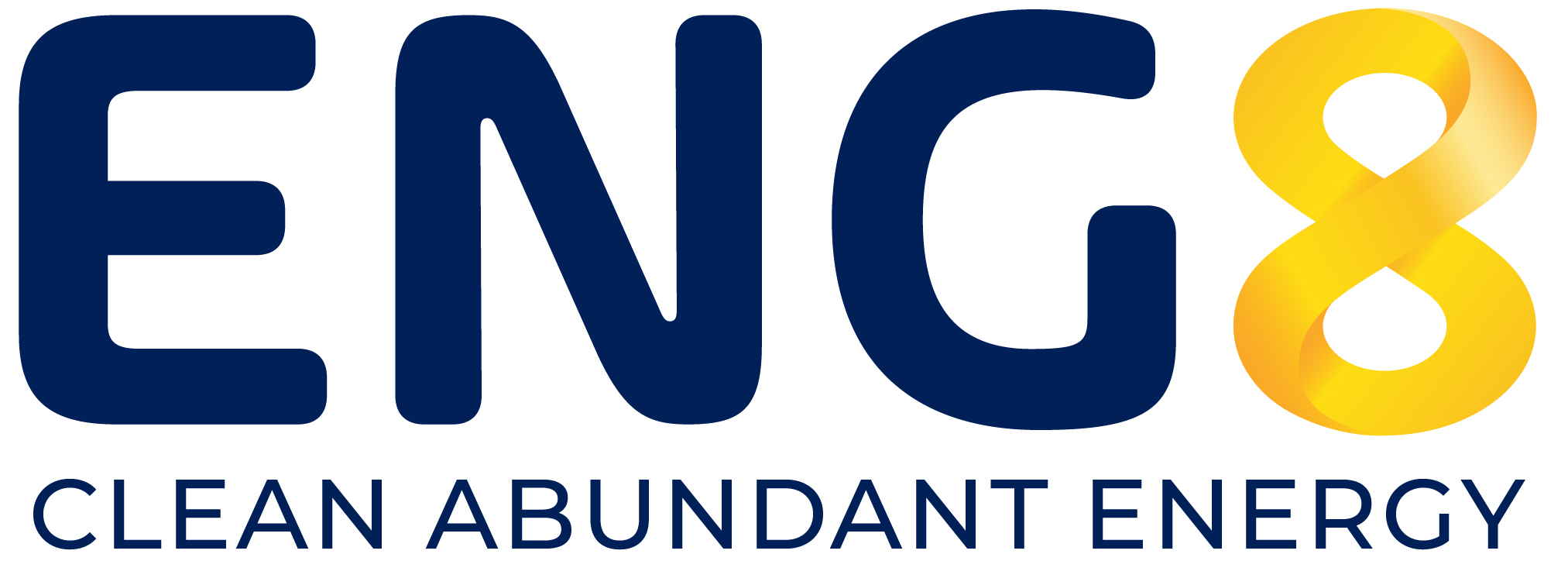A pioneering hydrogen fusion heating system delivers decentralised, low-carbon heat for industrial and community use
A major milestone in the realisation of practical, clean fusion energy has been announced by New Hydrogen Fusion Energy Inc. (Toyota, Aichi, Japan). Researchers Joji Hachisuka and Professor Emeritus Akito Takahashi report the successful demonstration of practical heat generation through nuclear fusion using light hydrogen as fuel.
At ENG8, we recognise this announcement as an important advancement in the global effort to realise safe, compact and affordable fusion energy. The demonstration of stable, radiation-free heat generation using light hydrogen shows that fusion based on nano-metal catalysts is moving steadily from research to engineering practice.
This achievement marks a turning point for applied fusion research, representing a critical step towards the societal implementation of safe, low-cost and sustainable fusion-based heat technology, contributing to the global transition to low-carbon energy solutions.
The NHFE project has been selected for funding under the Aichi Prefecture 2025 New Aichi Creative R&D Subsidy Programme and the Toyota City 2025 Toyota City Manufacturing Innovation Subsidy Programme. This support will accelerate ongoing work to improve heat dissipation performance and enable real-world deployment. Field testing of the company’s first hydrogen fusion heating system will begin this winter.
The underlying reaction mechanism, known as the TSC theory, is the result of 35 years of research on room-temperature nuclear fusion by Professor Takahashi of Osaka University. The theory proposes that four hydrogen atoms undergo a nuclear fusion reaction within or on the surface of a nano-metal solid, generating substantial heat without detectable radiation such as neutrons. Unlike conventional fusion, this process uses ordinary hydrogen (H), avoiding the need for deuterium or tritium.
Evidence supporting the TSC model includes the measured production of helium-3, an extremely rare isotope on Earth, as a by-product of hydrogen fusion. The amount of helium-3 was found to be proportional to the heat generated, providing empirical validation. These findings were published in February 2025 in the electronic journal of the Applied Physics Society.
Key Technical Achievements
- Fuel: Ordinary hydrogen gas (H₂); deuterium and tritium are not required
- Reaction medium: Nano-nickel metal composite powder (no precious metals required)
- Heat output: Approximately 1 kW per 1 kg of powder material
- Performance: Heat output more than twice the input power, with a mass-production target of more than ten times
- Operating range: Stable operation at 400–1000C
- Safety: No measurable radiation beyond natural background levels
- Longevity: Very small hydrogen consumption allows long-term operation for years
Editorial note: Technical performance figures and cost estimates are taken from the NHFE technical report and company press materials. Helium-3 detection has been reported in the Japanese Journal of Applied Physics (February 2025). Independent third-party replication of NHFE’s full system performance has not yet appeared in the public literature.
Practical Heating System
The forthcoming hydrogen fusion heater demonstrates practical operating characteristics:
- Continuous 6 kW heat output for six months using only 850 L of hydrogen
- Total operating cost for six months: around 22,000 yen (500 yen for hydrogen plus 21,500 yen for electricity)
- Generating the same heat with electricity would cost about 30 times more, with a heat pump about six times more, and with kerosene about 12 times more
- No combustion air or exhaust gases are produced, so no external air intake or ventilation is required
- The system operates even in extremely cold conditions and has an expected service life of more than ten years with material recycling
- CO₂ emissions are estimated at less than 10 per cent of those from fossil fuel use
This makes the heater suitable as a clean, decentralised heat source for commercial, industrial, agricultural, fishing and infrastructure applications.
Comparison: New Hydrogen Fusion and Conventional Thermonuclear Fusion
The researchers emphasised the broader technological and societal implications:
- Fuel and safety
- Conventional thermonuclear fusion relies on deuterium–tritium fuel and produces large numbers of neutrons, requiring heavy shielding and radioactive waste management
- New Hydrogen Fusion uses ordinary hydrogen and produces no neutrons or gamma rays. The kinetic energy of helium-3 and proton particles is converted directly into heat within the composite powder
- Consequently, radiation protection and waste management are unnecessary in compact NHFE heat modules
- Scale and application
- Conventional fusion suits large, centralised power generation facilities connected to electricity grids
- New Hydrogen Fusion enables small- to medium-scale, self-sufficient heat generation systems, suitable for independent or community-level use
- As a decentralised, self-contained heat source requiring no grid or gas pipeline, it can enhance local resilience while reducing CO₂ emissions and energy costs
By combining centralised and distributed energy systems appropriately, the researchers envision a future with significantly lower greenhouse gas emissions, very low energy costs and greater societal stability.
Path Towards Commercialisation
- Validation of tabletop fusion science: You don’t need billion-dollar facilities to do meaningful fusion research
- Cross-disciplinary breakthroughs: Chemistry and nuclear physics can inform each other in unexpected ways
- Diversification of approaches: Multiple fusion pathways are being explored simultaneously, increasing odds of breakthrough
References:
- Hachisuka, J. & Takahashi, A. For Social Implementation of New Hydrogen Fusion Energy (NHFE Tech Report, 2025-09-28). ResearchGate
- Hachisuka, J. & Takahashi, A. (2025). Applied Physics Society Electronic Journal, February 2025. IOP Science
- Press Release: New Hydrogen Fusion Energy Inc., 26 September 2025. PR TIMES

